Jakarta is a bustling metropolis and the capital of Indonesia, filled with skyscrapers, traffic, and a fast-paced city life that never slows down.
For many, it’s just a gateway to Indonesia, but this city has much more to offer. Beyond its modern facade, Jakarta hides historical sites, exciting attractions, and hidden gems waiting to be explored. It’s a city of contrasts—modern yet traditional, chaotic yet full of charm—and people tend to either love it or hate it.
In this guide, I’ll share everything you need to know to experience Jakarta for yourself. From top things to do, must-visit attractions, and local food recommendations to transportation tips, practical travel advice, and the best places to stay, this guide covers it all.
Why Should You Visit Jakarta?
As the largest city in Indonesia, Jakarta has so much to offer. Being the main entry point into the country, this metropolitan city was once the largest trading hub in Asia and the administrative center during the Dutch colonial era. Its strategic location near the port helped it grow rapidly, making it one of the most developed cities in Indonesia.
Jakarta is rich in history, with many well-preserved colonial-era buildings, fascinating museums, and important monuments that tell the city’s past.
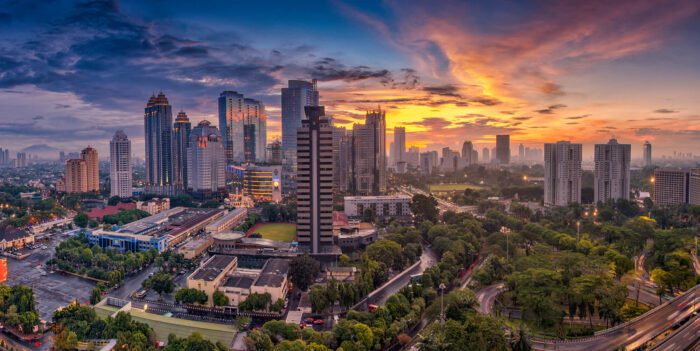
Besides its historical significance, Jakarta is also the most accessible city in Indonesia. Most transactions are now cashless, and modern conveniences are more widespread compared to other cities. The perfect blend of culture, history, and modern lifestyle makes Jakarta a must-visit destination for any traveler.
Things To Visit in Jakarta
Jakarta is more than just a bustling metropolis—it also hides some amazing gems worth exploring. From sightseeing spots that offer insights into Indonesia’s rich history to fun outdoor activities and unique experiences, there’s a lot to do in the city. Here are some of the top recommendations for sightseeing and things to do in Jakarta.
Kota Tua Jakarta (Jakarta Old Town)
Kota Tua Jakarta (Jakarta Old Town) is a must-visit sightseeing spot when you’re in the city. As the name suggests, this area is filled with well-preserved colonial-era buildings, many of which have been transformed into museums, restaurants, and cafés.
Located in West and North Jakarta, Kota Tua was the center of government and trade during the Dutch colonial era. The heart of the Old Town is Fatahillah Square, a lively plaza where you can watch street performances and soak in the historic atmosphere.
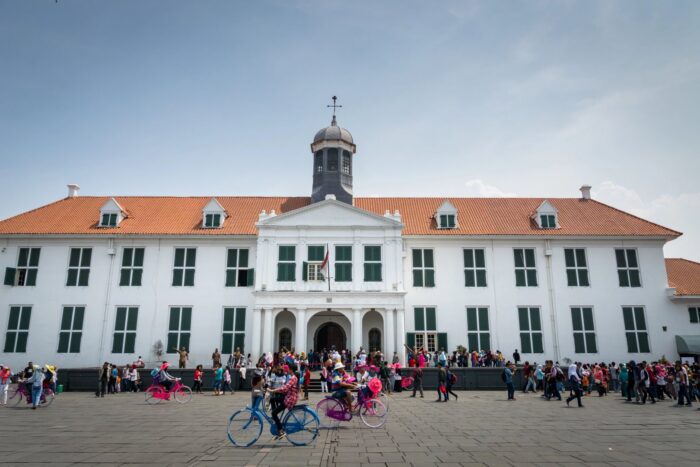
There are several fascinating and interactive museums you shouldn’t miss, such as:
- Museum Wayang (Puppet Museum), which has recently been renovated with a fresh new look
- Museum Fatahillah, showcasing Jakarta’s history
- Bank Mandiri Museum and Bank Indonesia Museum, offering insights into the country’s financial past
- Maritime Museum, located near Sunda Kelapa Harbor, where you can learn about Indonesia’s seafaring history
Walking along the pedestrian paths near the Ciliwung River, especially during sunset, is also a great way to enjoy the city’s charm.
For more details on Kota Tua Jakarta, check out our full article Visiting Kota Tua Jakarta: A Blend of Culture and History in One Place + How to Get There
Glodok Chinatown (Pasar Glodok)
Not far from Kota Tua, you’ll find Glodok, Jakarta’s Chinatown, located in West Jakarta. This area is famous for its semi-modern markets and vibrant culinary scene, offering a variety of authentic Asian dishes. Just a 10- to 15-minute walk from the Bank Indonesia Museum, Glodok is a great place to explore traditional Chinese architecture, temples, and street food hotspots like Gang Gloria.
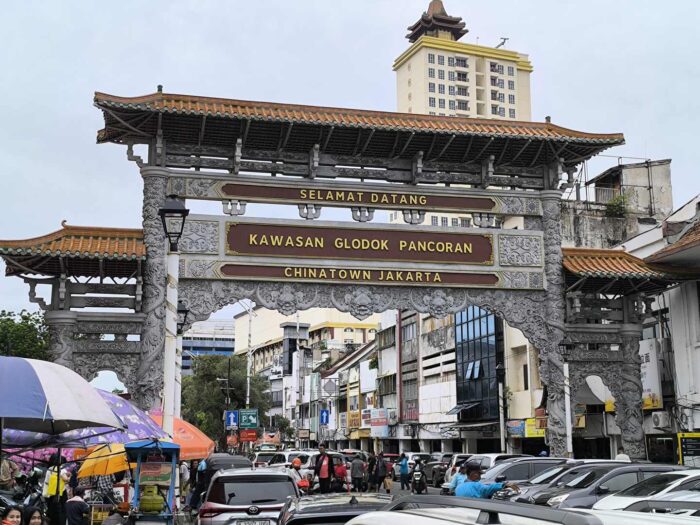
If you visit around the Lunar New Year, the entire market transforms into a sea of red, decorated with beautiful lanterns and festive ornaments, creating a truly immersive cultural experience.
Interested in Jakarta's Chinatown? Head to our article Glodok: Traveler’s Guide to Jakarta’s Chinatown.
National Museum (Museum Gajah)
After being closed for an extended period due to a fire, Museum Gajah (National Museum of Indonesia) has reopened with a fresh, modern look and a more engaging visitor experience.
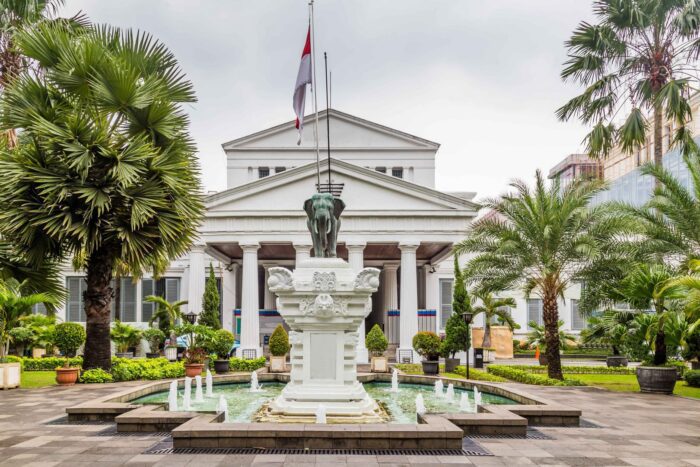
The museum now features:
- Immersive projection shows that bring history to life
- Facial recognition scanners for interactive exhibits
- Better-organized collections, making it easier to explore Indonesia’s rich cultural heritage
This museum is a must-visit for both local and international tourists. In the evening, it becomes even more popular due to its holographic light displays and Jakarta city dioramas, creating a magical experience for visitors.
Monas (National Monument)
Monas is an iconic landmark of Jakarta. This towering monument, standing 132 meters (433 feet) tall, is easily recognizable by its golden flame at the top, which is coated with 24-karat gold.
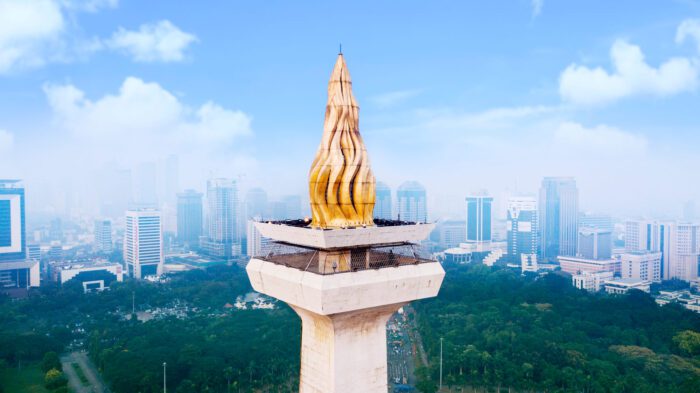
Visitors can take an elevator to the top of Monas for a panoramic view of Jakarta. However, you will need to buy a ticket at the counter beforehand. If you have a JakCard, you can go directly to the entrance gate, as long as your card has enough balance.
At the base of the monument, there is a museum showcasing dioramas that tell the story of Indonesia’s independence. It is also where the first Indonesian flag is kept.
Beyond the monument itself, Monas Park is a great place for a leisurely walk. The large green space is filled with lush trees, making it a refreshing spot to relax in the middle of the city. The entrance fee to Monas is very affordable, IDR 24,000, the same price for both local and foreign tourists.
Istiqlal Mosque
Not far from Monas, you’ll find another Jakarta landmark—Istiqlal Mosque. As the largest mosque in Southeast Asia, it serves as an important place of worship for Muslims and also a fascinating cultural site for visitors.

Tourists are welcome to explore the grand and spacious architecture of the mosque. Near the entrance, you’ll also find food vendors and souvenir stalls offering items at reasonable prices.
One unique feature of Istiqlal Mosque is the Silaturahmi Tunnel, an underground passage that connects the mosque to Jakarta Cathedral, symbolizing religious tolerance in Indonesia.
Before visiting, make sure to dress modestly. If needed, mosque staff will kindly lend visitors a robe to wear during the tour. Also, be prepared to remove your shoes before entering the main prayer hall.
Don’t hesitate to visit Istiqlal Mosque—it’s not just a place of worship but also a must-visit destination to gain deeper insight into Indonesia’s diverse culture and religious harmony.
You can join a tour around Jakarta! Here are some of the best tour packages to explore the city:
National Library of Indonesia
It may sound unusual to include a library in a list of tourist recommendations, but the National Library of Indonesia is not just any library. This 24-story building offers unique attractions you won’t find elsewhere, including historical artifact collections, interactive exhibitions, and special events.
One of the highlights is the top floor, where you can enjoy a panoramic view of Jakarta from above.
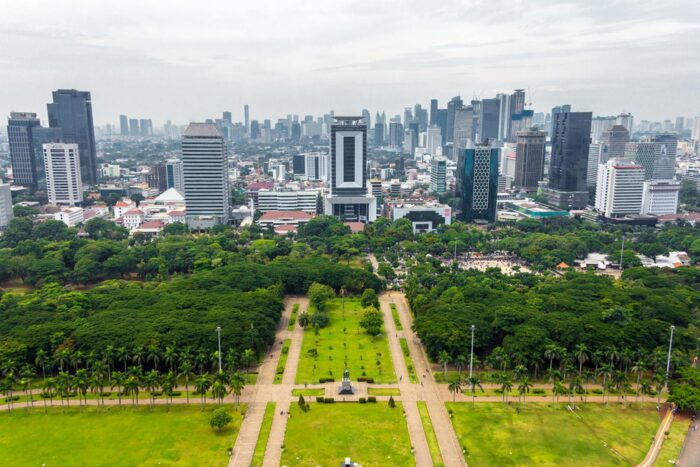
There is no entrance fee to visit the National Library. However, you need to register as a member on the 2nd floor using a valid ID (such as a passport). The library is open until 7 PM on weekdays and until 4 PM on weekends.
Backindo Tip: There might be a long queue to enter Monas, especially on weekends and holidays. The National Library is a great alternative, which offers a similar panoramic view from its rooftop without the wait.
TMII (Taman Mini Indonesia Indah)
This recreational park combines education and entertainment in one place. Taman Mini Indonesia Indah (TMII) covers an area of 150 hectares and showcases 34 traditional houses, each representing a different province in Indonesia. The park also features museums, a mini zoo, and the cable car ride, which offers an aerial view of the entire park.
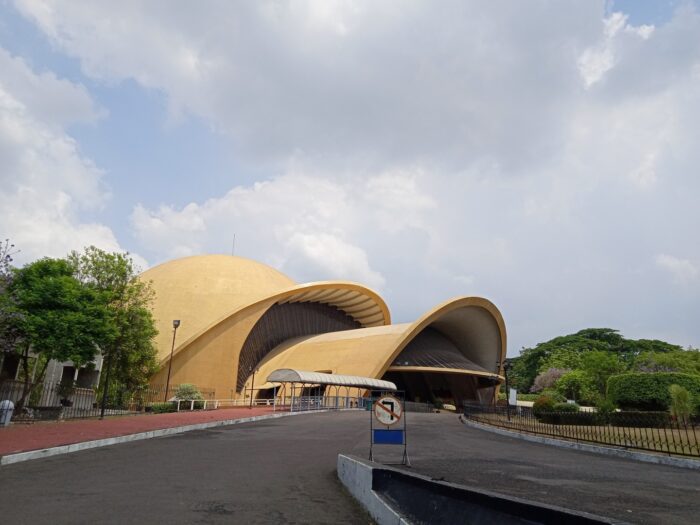
One of the highlights at TMII is the Tirta Menari and Tirta Bercerita shows, held in the afternoon. These are water fountains and holographic performances that bring legendary Indonesian folklore to life. Visiting TMII is a great choice, especially if you’re traveling with family and kids.
For more details, check out our article Taman Mini (TMII): Explore All of Indonesia in Jakarta
The park is located in East Jakarta, quite far from the city center. You can take the LRT (Light Rail Transit) and get off at TMII Station. Booking tickets online is recommended, as it includes a free shuttle service from the LRT station.
If you prefer taking a taxi, the ride from Central Jakarta to TMII takes around 35 minutes, depending on traffic conditions.
Ragunan Zoo
For a family-friendly outdoor experience, Ragunan Zoo in South Jakarta is a great option. The zoo is home to a wide variety of animals, including Sumatran tigers, elephants, giraffes, and reptiles.
One of the highlights for kids is the Baby Zoo, where they can get up close with young animals, and they can even ride a pony. To enter Ragunan Zoo, you’ll need a JakCard, which can be used for multiple visitors in one transaction.
Museum MACAN (Modern and Contemporary Art in Nusantara)
Museum MACAN showcases a diverse collection of modern and contemporary art from both Indonesian and international artists. Located in Kebon Jeruk, West Jakarta, this 7,100-square-meter museum is a must-visit for art enthusiasts.
The exhibits frequently change, so there’s always something new to discover. One of the museum’s most popular installations is the “Infinity Mirrored Room – Brilliance of the Souls” by renowned Japanese artist Yayoi Kusama.
It’s best to book your tickets online through their official website or tiket.com, as on-site tickets are limited.
Jakarta has a variety of museums worth visiting. We have compiled them in 12 Must-Visit Museums in Jakarta: Iconic Spots & Hidden Gems
Setu Babakan
Setu Babakan is a living cultural village in Jakarta dedicated to preserving the traditions of the Betawi people, the city’s indigenous ethnic group. Located in South Jakarta, this vibrant area showcases Betawi architecture, traditional arts, music, dance, and culinary heritage. Visitors can explore authentic Betawi-style houses, watch Lenong (traditional theater) and Ondel-Ondel (giant puppet performances), or take part in cultural workshops like batik-making and silat (martial arts).
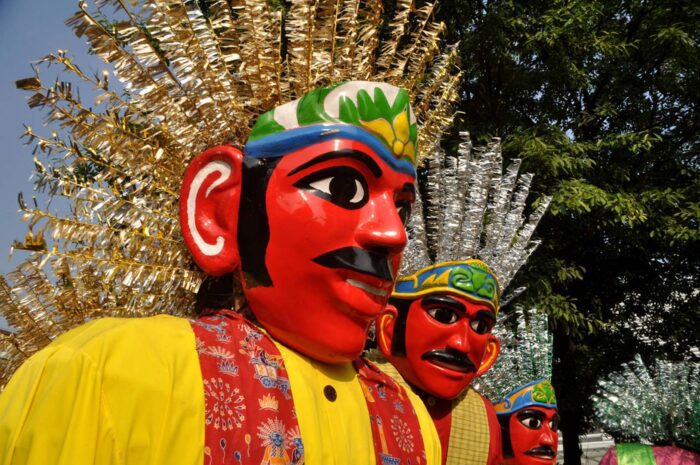
Beyond cultural performances, Setu Babakan is also known for its beautiful lake, where you can enjoy a relaxing boat ride or try fishing. Don’t miss the chance to taste Betawi specialties such as Kerak Telor (savory egg pancake), Roti Buaya (crocodile-shaped bread), and Bir Pletok (spiced herbal drink).
Parks and Green Spaces to Visit in Jakarta
Jakarta isn’t always expensive—there are plenty of free spots where you can relax without spending a dime. If you need a break from the city’s hustle, check out these parks:
- Taman Suropati (Central Jakarta) – A peaceful park in Menteng, filled with lush greenery, tall trees, and plenty of benches to unwind.
- Martha Tiahahu Literacy Park (South Jakarta) – Located in Blok M, this park features a public library, elevated pedestrian walkway, and nearby food vendors.
- Tebet Eco Park (South Jakarta) – A family-friendly space with playgrounds, a long connecting bridge, and eco-friendly attractions.

Other free spots worth visiting include Taman Langsat, Lapangan Banteng, and the Skydeck at Bundaran HI Bus Stop—one of the best photo spots in Jakarta. Most of these locations are easily accessible by TransJakarta Bus, with stops nearby.
Best Day Trips and Short Getaways from Jakarta
Many travelers ask, “Are there any outdoor adventure spots in Jakarta?” The answer is absolutely! While the city offers a vibrant urban experience, travelers seeking outdoor adventures can find several enticing destinations just a short trip away.
Thousand Islands
Exploring the Thousand Islands offers a unique island-hopping adventure just off the coast of Jakarta. This cluster of islands is perfect for a weekend escape, whether you prefer camping on remote beaches or staying in cozy cottages connected by wooden bridges, reminiscent of the Maldives.
Things to do in the Thousand Islands
- Snorkeling & Diving – Discover vibrant coral reefs and diverse marine life.
- Water Sports – Try jet skiing, banana boat rides, and other exciting activities.
- Mangrove Trekking – Walk through lush mangrove forests and explore coastal ecosystems.
- Wildlife Encounters – Visit shark and turtle conservation sites on Pulau Kelapa Dua, Pulau Pramuka, and Pulau Semak Daun.
- Fishing & Beach BBQ – Catch your own fish and enjoy a barbecue by the ocean.
Some of the best islands to visit in the Thousand Islands include Pulau Pramuka and Pulau Pari, perfect for relaxing and exploring local island life, as well as Pulau Harapan and Pulau Tidung, known for their stunning snorkeling spots and pristine coral reefs.
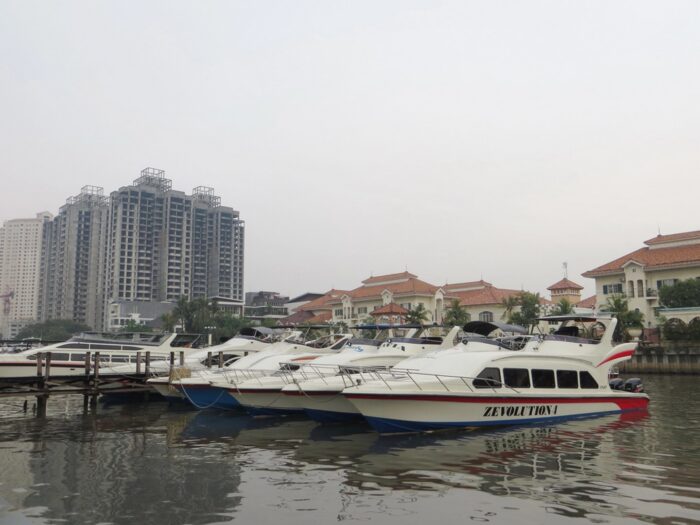
If you want to experience more of the archipelago, consider joining an open trip, a group tour with a well-planned itinerary that allows you to visit multiple islands and try various activities.
I recommend visiting some of the best islands in the Thousand Islands:
- Pulau Pramuka & Pulau Pari – Ideal for relaxing and exploring local island life.
- Pulau Harapan & Pulau Tidung – Top snorkeling spots with pristine coral reefs.
If you want to explore more, consider joining an open trip. These group tours offer a more extensive itinerary, allowing you to visit multiple islands and enjoy a variety of activities.
For more things to do in the Thousand Islands, check out the trips bellow:
Bogor
Bogor, just an hour from Jakarta by commuter train (KRL), is a perfect day trip for travelers seeking nature, culture, and a cooler climate. The Bogor Botanical Gardens are the main highlight, offering lush greenery, giant lotus ponds, and the rare corpse flower. For a cultural touch, visit Kampung Budaya Sindang Barang, a Sundanese village with traditional music and dance. Adventure seekers can head to Taman Safari Indonesia, a wildlife park where you can drive past roaming zebras and lions.

While Bogor can be explored in a day, staying overnight allows more time to enjoy its laid-back atmosphere and local food, like Soto Mie Bogor and Toge Goreng. The fastest and easiest way to get there is by KRL commuter train from Jakarta’s Kota, Gambir, or Sudirman stations, avoiding the unpredictable traffic.
What to see and do in Bogor? Head to our guide The Rain City of Bogor: How to Get There and What to Explore South of Jakarta.
Bandung
Just 2.5–3 hours from Jakarta, Bandung is a great day trip or weekend getaway for travelers looking for cooler weather, nature, and local charm. Surrounded by volcanic landscapes and tea plantations, it offers stunning scenery and plenty of outdoor activities. Visit Tangkuban Perahu, an active volcano with steaming craters, or relax in the Ciwidey hot springs. The Lembang Floating Market and Kawah Putih (White Crater) are also must-sees for unique photo spots.

Bandung is known for food and shopping, with factory outlets, trendy cafés, and famous Sundanese cuisine like Nasi Timbel (banana leaf-wrapped rice) and Batagor (fried fish dumplings). While you can visit in a day, an overnight stay is recommended to fully enjoy the city. The best way to get there is by train from Gambir Station (about 3 hours), by the high-speed train Whoosh or private car.
Find everything you need to know before planning your trip to Bandung in Bandung: Ultimate Travel Guide to the Capital of West Java.
Baduy Tribe
For a truly off-the-grid experience, visiting the Baduy people offers a rare glimpse into one of Indonesia’s most traditional communities. Located in Banten, about 4–5 hours from Jakarta, the Baduy Dalam (Inner Baduy) live in complete isolation—no electricity, no phones, and no modern infrastructure—and their villages are not open to foreign visitors. Meanwhile, the Baduy Luar (Outer Baduy) act as a bridge between tradition and modernity, offering a more accessible way to experience their unique way of life.

A 2-day trip is ideal to fully immerse yourself in Baduy culture. Staying overnight in a traditional stilt house, you’ll experience life without modern comforts while learning about weaving traditions, natural dye techniques, and daily customs.
What is the best way to reach Badu? Read Baduy Tribe: Discover Indonesia’s Isolated Community near Jakarta.
Recommended Food and Cuisine in Jakarta
As a big city, Jakarta offers a wide variety of food options for every taste. From traditional Indonesian dishes to Chinese food and even Western cuisine, you’ll find it all here.
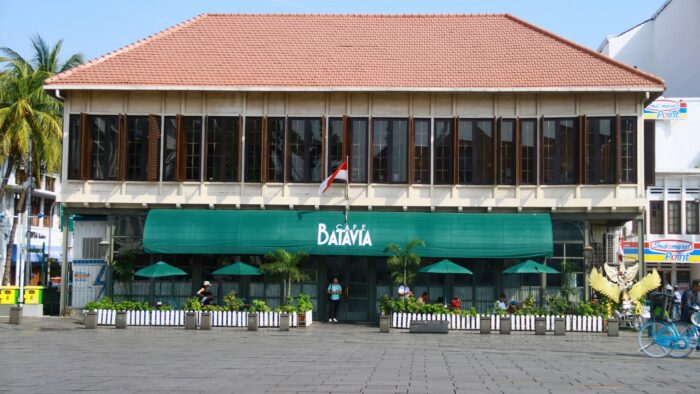
Jakarta is also famous for its delicious street food, which is a must-try for food lovers. With so many choices available, I’ve put together a list of the best food spots in Jakarta, categorized by location and type of cuisine to help you decide where to eat.
Kota Tua Jakarta (Jakarta Old Town): Enjoying Authentic Cuisine
As a historical icon of Jakarta, Kota Tua (Jakarta Old Town) is also home to several cafés and restaurants that serve authentic dishes. One must-try spot is Acaraki Café, where you can experience traditional herbal drink Jamu with an artistic touch, presented in a way similar to a modern coffee shop.
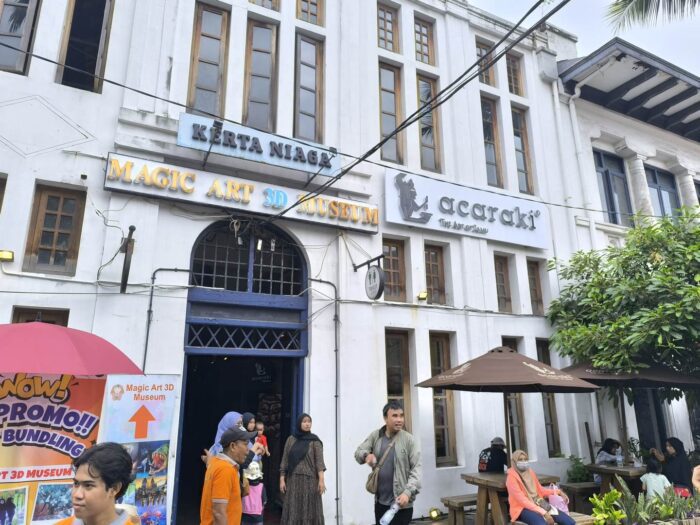
If you’re looking for a fine dining experience with traditional flavors, Café Batavia is the perfect place. Located right next to Fatahillah Square, this café is easily recognizable by its iconic green canopy. The menu includes classic Indonesian dishes like Rawon (Javanese beef soup), various chicken and fish dishes, as well as Western favorites such as pasta, cheeseburgers, and beef steak. The prices here are higher, but the quality, taste, and presentation make it worth it.
Aside from these two cafés, other recommended culinary spots in Kota Tua Jakarta include Kedai Iboe Madam, which specializes in Betawi cuisine, NYPD Pizza, Bakso Mastom near Pasar Djadoel, and a food court with a variety of choices at Batavia Kantine and Foodcourt 21.
Petak 6 Pasar Glodok: Legendary Cuisine
Pasar Glodok, or Jakarta’s Chinatown, is known as a paradise for legendary street food. Many vendors here have been selling their specialties for decades. A must-try is Pempek Eirin, which has been making delicious Pempek (fish cake with sweet and sour cuko sauce) since 1981.
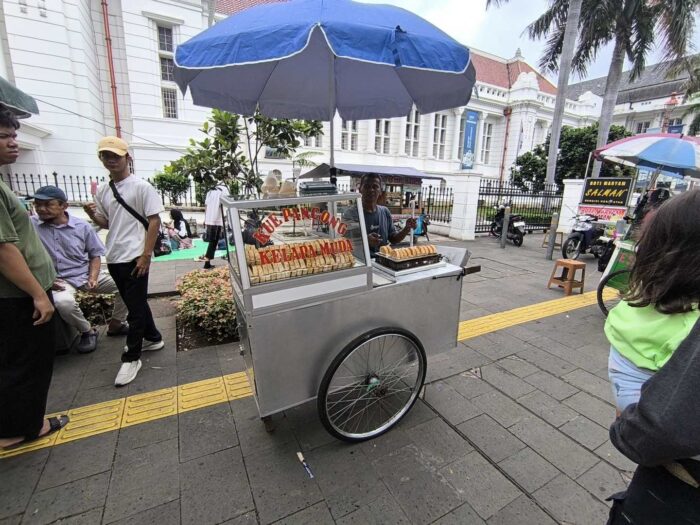
Other highlights include Bakpao Panggang Wo Ai Pao (grilled buns), Kwetiau Mama Tjoa (stir-fried flat noodles), and Laksatiam (authentic Singaporean cuisine). For a taste of local flavors, Soto Betawi Haji Mamat offers a rich Betawi-style beef soup, while Cempedak Goreng Cik Lina serves crispy fried cempedak, a tropical fruit similar to jackfruit.
Another great spot is Food Court Pancoran ChinaTown Point, where you can explore a variety of stalls and choose whatever excites your taste buds.
Blok M: A Culinary for Urban Foodies
Blok M is one of the most popular culinary hotspots among Jakarta’s urban crowd. The Blok M shopping district is packed with food stalls, restaurants, and cafés, all lined up in the heart of Central Jakarta.
If you’re a Japanese food lover, Blok M is the perfect place, as it boasts numerous Japanese restaurants serving authentic dishes from Japan. You can also enjoy coffee and café-style cuisine around M Bloc Space, a trendy area known for its cozy eateries.
For noodle lovers, Bakmiaw is a must-visit, offering a variety of noodle dishes, including vegan-friendly options. Inside Blok M Mall, you’ll also find various food courts selling a wide range of local dishes and street food, making it a great place to explore different flavors.
For food lovers, get inspired by Best 15 Indonesian Street Foods: A Flavorful Journey Through Local Delights.
Where to Stay in Jakarta
Picking the right location in Jakarta is key to avoiding long commutes and making your trip smoother. Here are some of the best places to stay.
Best Cheap Accommodations
- Konko Hostel Jakarta – A top choice for solo travelers, located in Menteng, just 1 km from Gambir Station. Small but comfortable rooms and a great social vibe.
- Erian Hotel Jakarta – Modern and cozy rooms, perfect for couples, with a great city view and friendly staff. Centrally located in Menteng.
- Wonderloft Hostel – Located in Kota Tua, ideal for backpackers who want to stay near Jakarta’s top attractions. Clean dorms and a relaxed social space.
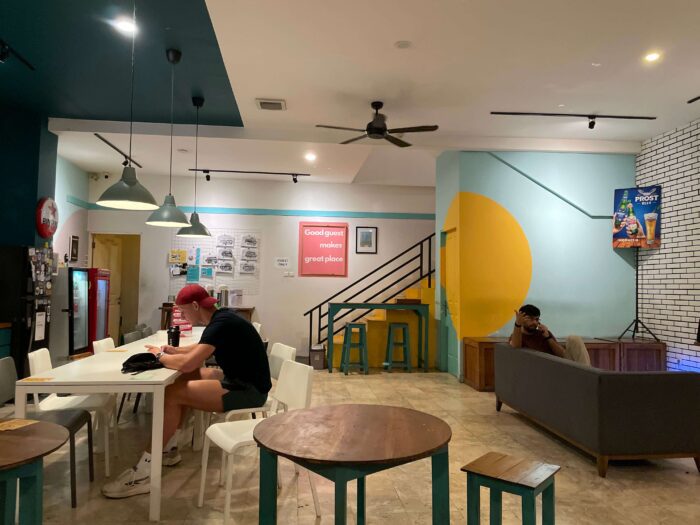
We also have a full review of Wonderloft Hostel Jakarta—Wonderloft Hostel Review: The Best Budget Choice in Jakarta to learn more!
Top Middle-Priced Hotels
- Stanley Wahid Hasyim Jakarta – A clean, stylish, and budget-friendly hotel, perfect for couples looking for comfort at a good price.
- Ashley Tugu Tani Menteng – A 4-star hotel in Menteng with affordable rates, a fitness center, a pool, and an on-site restaurant.
- Mercure Jakarta Batavia – Spacious and comfortable, featuring an outdoor pool, fitness center, sauna, and a delicious breakfast buffet. Close to Jakarta Old Town.
Best Luxury Hotels
- Hotel Borobudur Jakarta – A luxurious oasis in the city center, featuring large gardens, a massive pool, and top-notch service. Near Monas and Gambir Station.
- House of Tugu – A boutique luxury hotel in Kota Tua, blending heritage design, history, and authentic Indonesian cuisine for a unique stay.
Best Apartments For Families and Groups
For families and groups traveling to Jakarta, staying in an apartment offers more space, comfort, and flexibility. Here are two great options based on location, amenities, and convenience:

- Magnolia Stay Kebon Jeruk – A spacious and modern apartment in West Jakarta, perfect for families looking for a comfortable stay with great facilities. It features a swimming pool, a children’s playroom, and fully equipped units with a kitchen and living area. Located just 30 minutes from Soekarno-Hatta Airport, it’s a convenient choice for those arriving or departing from Jakarta.
- Lego Japanese Style by Acewin Dragon Inn – A smaller, minimalist apartment in Jakarta’s Chinatown (Glodok), ideal for short stays and groups who prioritize location. While it doesn’t have a kitchen or playroom, it’s strategically placed near the main road and only a 15-minute walk from Kota Tua, making it easy to explore Jakarta’s historic district.
For more details on the best accommodations in Jakarta, check out our guide Where to Stay in Jakarta: Top Areas and Accommodations
How to Get Around Jakarta
Jakarta’s public transportation system is more developed compared to other cities in Indonesia, making it easier for travelers to get around. Many transport modes are integrated, allowing seamless transfers between different services.
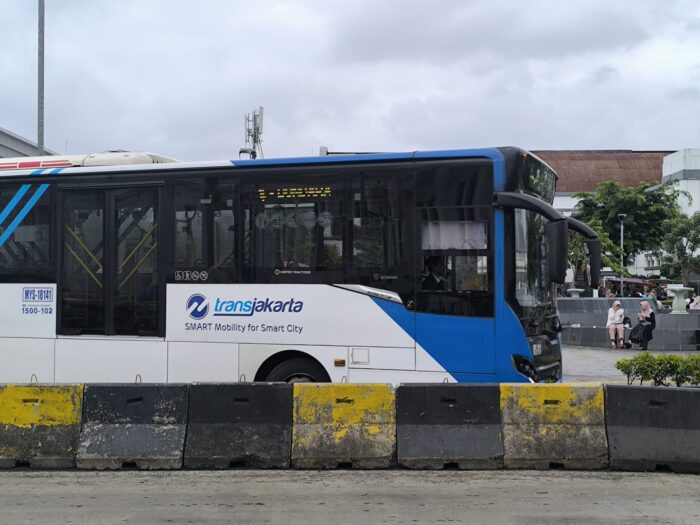
Public Transportation Options
- TransJakarta Bus (Busway) – A fast and budget-friendly way to explore the city, with a flat fare of IDR 3,500 per ride (regardless of distance). Payment is cashless, so you’ll need an electronic money card before using it.
- MRT & LRT – The MRT (Mass Rapid Transit) and LRT (Light Rail Transit) provide a fast and comfortable way to reach key locations in Jakarta.
- KRL Commuter Line – Best for longer distances, connecting Jakarta to Bogor, Depok, Tangerang, and Bekasi.
- Bajaj – Jakarta’s version of a tuk-tuk, perfect for short distances and navigating narrow streets.
- Jakarta Explorer Bus – A free city tour bus, available only on weekends, offering guided sightseeing tours on different routes.
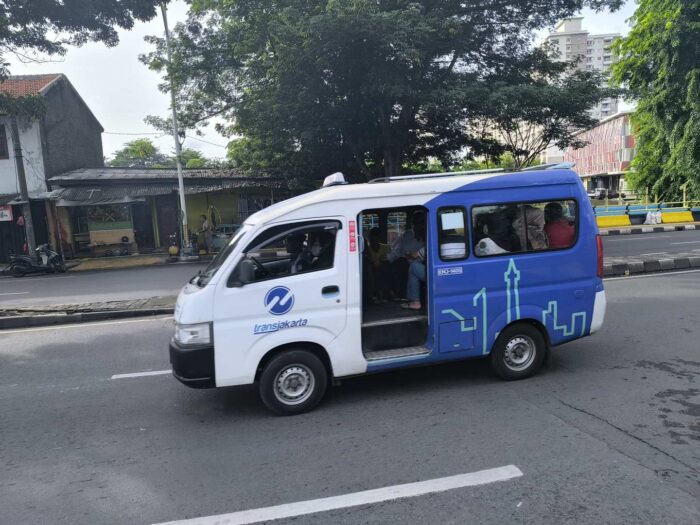
Backindo Tip: Jakarta’s public transport is clean and efficient, but crowded during peak hours (morning and evening). Travel off-peak for a more comfortable ride.
City Tour Bus: Explore Jakarta with Ease
Want to explore Jakarta comfortably and hassle-free? Try hopping on the Jakarta Explorer Bus, a free sightseeing bus designed for tourists. This double-decker bus with an open roof comes with a tour guide who will take you around the city and explain the attractions along the way. It operates only on Saturdays & Sundays. Also they have 3 different themed city tours:
- Historical Jakarta (BW1) – Stops at Istiqlal Mosque, Bank Indonesia Museum, and Kota Tua (Jakarta Old Town).
- Modern Jakarta (BW2) – Covers Monas, City Hall, Gambir area, and the National Library.
- Skyscraper Tour (BW3) – Passes through Jl. Jendral Sudirman, Senayan, Gelora Bung Karno Stadium, and Pasar Baru.
Other city tour routes are currently under maintenance.
Important Notes:
- You must book on the app TJ: Transjakarta, but you still need an electronic payment card for tap-in and tap-out.
- Departure points are usually at IRTI Monas Bus Stop in front of Balaikota.
Public Transportation Payment in Jakarta
Most public transportation payments in Jakarta are cashless. To use public transport, you’ll need an electronic money card, which can be purchased at minimarkets, train stations, TransJakarta bus stops, or the airport.

Jakarta offers several electronic money card options, which can be confusing for first-time visitors. However, I personally recommend using the JakCard, as it offers additional benefits—especially for travelers planning to visit multiple attractions in Jakarta.
With a JakCard, you can pay for entry to Monas, Ragunan Zoo, and TMII, and use one card for multiple people as long as there’s enough balance. However, the downside is that it can’t be used in other cities, unlike bank-issued cards like Mandiri e-Money or Flazz, which work across Indonesia but don’t allow multiple users or cover tourist entrance fees.
Learn about the different electronic money cards in Jakarta with our guide JakCard vs JakLingko: Which Card Travelers in Jakarta Need.
Safety in Jakarta
Jakarta is generally safe for tourists, with low crime rates and few major incidents. However, stay alert in crowded areas like markets, where pickpocketing can occur.
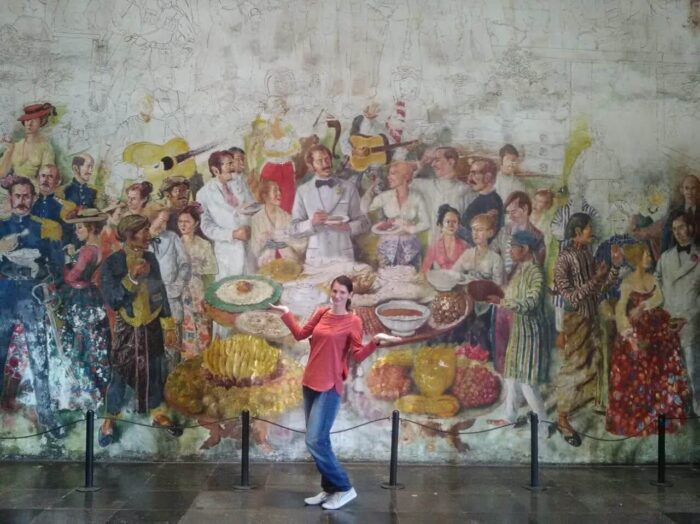
The main concerns are weather and pollution. During the rainy season, some areas may flood, disrupting travel. Jakarta also has serious air pollution, so it’s best to carry a mask, stay hydrated, and take breaks in green spaces when possible.
Let’s Explore Jakarta
Even though Jakarta is a busy urban metropolis, the city offers many exciting activities you won’t want to miss. Exploring Kota Tua Jakarta, for example, is a fun way to admire historic buildings while soaking in the city’s past. There are also plenty of iconic landmarks to visit, such as Monas and Istiqlal Mosque.
Jakarta also has many free spots, like beautiful parks where you can escape the city’s hustle and bustle. As a city with a vibrant urban lifestyle, it’s also home to countless must-try food spots.
Getting around Jakarta is easy, thanks to its comfortable public transportation options. And if you’re up for an adventure, don’t miss the hidden gems in the Thousand Islands, where you can enjoy outdoor activities in a stunning natural setting.
Jakarta is a must-visit destination in Indonesia! From historic sites and vibrant city life to hidden gems and delicious food, this bustling metropolis has something for everyone. So don’t hesitate—dive into the energy of Jakarta and start your adventure!
FAQ
Where can you go in Jakarta to enjoy nature and wildlife?
In Jakarta, you can enjoy nature and wildlife at Ragunan Zoo, home to over 3,000 animals, including endangered species. For a peaceful escape, visit Taman Suropati or Tebet Eco Park, which offer green spaces for relaxation. If you love marine life, head to SeaWorld Ancol, or explore the Thousand Islands, where you can snorkel and enjoy pristine beaches.
What is the most famous thing about Jakarta?
Jakarta is famous for its iconic landmarks like Monas (National Monument), vibrant shopping malls, and rich street food culture. The city is also known for Kota Tua (Old Town), showcasing Dutch colonial history, and Istiqlal Mosque, the largest mosque in Southeast Asia. Additionally, Jakarta offers a mix of modern skyscrapers, bustling markets, and cultural diversity, making it a unique destination in Indonesia.
How do you spend time in Jakarta?
You can spend time in Jakarta by exploring its historical landmarks like Monas and Kota Tua, enjoying street food at local markets, or shopping in mega malls like Grand Indonesia. For a break from the city’s hustle, relax in Tebet Eco Park or visit Thousand Islands for a beach escape. If you love culture, explore museums, art galleries, or watch a traditional dance performance. Getting around is easy with public transport like MRT and TransJakarta, making it simple to experience the city’s best spots.
